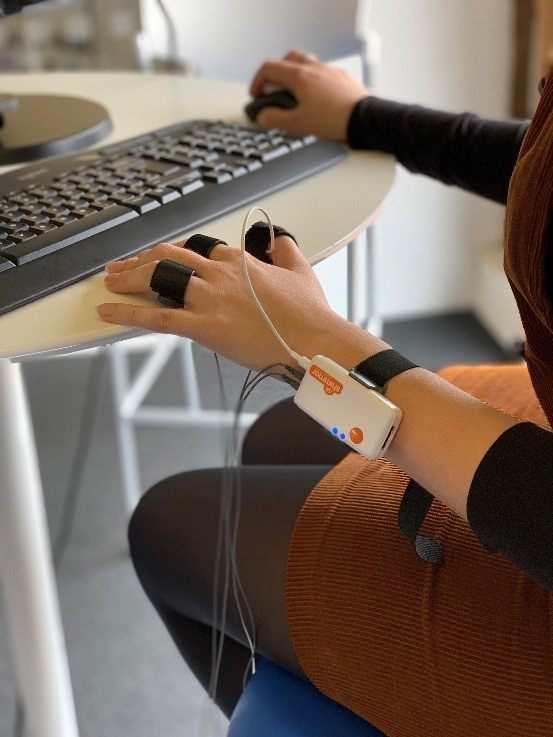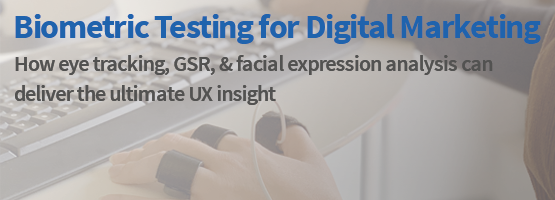Why do consumers opt for your brand over another? What drives their buying behaviour? How will a target audience respond to your advertising efforts?
For decades, marketers have attempted to answer these questions using traditional market research methods like customer questionnaires, interviews and focus groups. The drawback however, is that these methods rely on feedback straight from the horse’s mouth, so to speak, even though most of the decisions we make occur in our subconscious minds.
To really understand what drives consumer behaviour and decisions, marketers must look beyond rational thought and study the emotional impacts of advertising – that’s where neuromarketing comes in.
What does neuromarketing mean?
The term ‘neuromarketing’ simply means neuroscience applied to marketing. Neuroscientists study brain activity and how it impacts behaviour and cognitive functions. Neuromarketers study and measure subconscious responses to stimuli to gain deeper insight into consumer preferences.
What tools and technology do neuromarketers use?
Neuromarketers utilise biometric technology to study emotional responses in the brain and the body. The term ‘biometrics’ refers to the scientific measurement of human emotion and behaviour.
The hi-tech equipment used for neuromarketing research is where things get even more exciting. Needless to say, when biometric biosensors are used together, the technology becomes so much greater than the sum of its parts.
Let’s take a look at the biosensors involved in neuromarketing research:
Eye tracking (ET)
Eye tracking gives marketers the opportunity to understand what people look at, how long they look at it for, and what they avoid looking at. Studying what does and doesn’t attract a user’s point of gaze is incredibly useful for identifying optimisation opportunities.
![]()
Eye tracking technology directs near-infrared light towards the centre of the user’s eyes, causing visible reflections that are tracked by a high-res camera. The sophisticated image processing algorithm behind the software then identifies specific details in the reflection patterns before calculating the sequence of gaze patterns.
Facial expression analysis (FEA)
Our facial expressions are often a key indicator of the emotions we feel at any given time. Facial expression analysis software detects the user’s face, establishes ‘facial landmarks’ (eyes, nose, mouth etc.) and then evaluates how the face moves in order to categorise the implied emotion.

This means that the software can recognise the furrowed brow of a frown, or the curved lips of a smile and then provide a quantifiable probability of which emotion is being felt. The software itself can identify up to 7 different emotions:
- Joy
- Anger
- Surprise
- Fear
- Contempt
- Sadness
- Disgust
Galvanic skin response (GSR)
GSR technology monitors a user’s heart rate and sweat gland activity in order to determine their level of emotional arousal. Sweating is the body’s way of regulating its internal temperature and returning us to a ‘normal’ state after we’ve been exposed to stimuli. In a nutshell – the more we sweat, the greater our arousal.

When used in combination with the facial expression analysis software, the GSR sensor can help to determine the intensity of the emotions being felt. For example, let’s say you were testing the usability of your website by asking participants to find certain page on the site. If the participant struggles to find the necessary information, you might glean from their facial expression that they are experiencing frustration – but the GSR sensor will measure a spike in sweat levels and increased heart rate to identify how intensely that emotion is being felt.
Electroencephalography (EEG)
An EEG uses electrodes placed on the scalp to track, measure and record electrical activity in the brain. This provides insight into the ways in which neurons in the brain communicate with each other through electrical impulses.
The reason this is useful is because it allows marketers to identify the brain processes that drive decision-making and behaviour patterns.
Why neuromarketing matters
What people say and what they do are often two completely different things. Where existing user research methods address consciously prepared reactions, neuromarketing deals with subconscious behavioural reactions.
Mouse tracking can show us where a user went on a website, but it can’t tell us how they felt about the experience. Surveys and questionnaires give us some insight into user experience, but are the answers reliable if people just say what they think the researcher wants to hear?
The way we interact with technology is constantly evolving, which is why it’s so important that your research techniques follow suit with fresh, innovative methods.
Unrivalled insight
Neuromarketing techniques are a game changer and have completely transformed the landscape of market research and user experience testing.
Having this level of insight into consumer behaviour and purchasing decisions can help marketers to:
- Improve brand recognition and engagement
- Identify key opportunities for optimising marketing strategies
- Really understand what your target audience want and expect
If you’d like to talk to us about how we can help you supercharge your marketing campaigns with neuromarketing methods, contact us today!
Interested in learning more about neuromarketing and biometrics? Check out one of our free guides:

